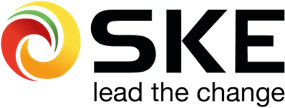What is the Smart I-V Curve Diagnosis 3.0?
У КСНУМКС-у, Huawei launched the AI Smart Boost I-V Curve 3.0 Diagnosis, integrating Artificial Intelligence (AI) technology in the field of solar operation and maintenance (O&M) for the first time. The solution uses smart photovoltaic (PV) inverters to scan PV strings to obtain the relationship (I-V curve) between the output voltage and output current. Смарт ПВ контролни систем врши анализу великих података на основу и-в криве ПВ модула, applies AI smart diagnosis algorithms, identifies faulty strings accurately, and outputs a diagnosis report. Through AI self-learning, the solution is accumulating I-V experience and optimizing fault models, transferring O&M of solar PV into the AI era.
What Problem Can Smart I-V Curve Diagnosis 3.0 Solve?
It is fully proved that PV module faults are the key factor that affecting the energy yield of PV plants. PV module faults at early, middle, and late stages differ greatly. Manual inspection and traditional supervisory control and data acquisition (SCADA) cannot accurately locate the root cause of the faults. Traditional I-V detection is offline detection that requires site visits with devices carried. A 100 Мега вати (Мв) ПВ plant, for example, има на десетине хиљада ПВ modules и корице у area equivalent to 300 фоотбалл fields. As a result, not all PV modules can be scanned. Morover, generating reports manually is error-prone and time-consuming. Increasing PV application scenarios, complex terrain, as well as the advent of new types of PV modules such as bifacial PV modules all impede manual detection and raise the costs.

Huawei Smart I-V Curve Diagnosis 3.0 changes the traditional manual sampling detection. The system performs full detection on all PV modules. Samo 15 minuta za scan a 100 MV PV plant and automatically generate a detection report covering 14 types of faults. Решење применити на широк спектар ПВ сценариос, such as large - scale ground, distributed, and residential PV plants. The detection is completed мрежи, штеде the personnel of site visits. This greatly improves the O&M efficiency of PV plants in the entire life cycle and reduces the O&M cost.
Compared with monofacial PV modules, bifacial ones, affected by weather and ground conditions, suffer the mismatch effect more. Due to the uneven irradiation on the rear side of bifacial PV modules and ground diffuse reflected, the accuracy requirement of the I-V detection is higher. Бесидес, the incurred current mismatch не мора да буде само considered as faults. Кроз АИ селф-леарнинг, Smart I-V Diagnosis 3.0 further adapts with bifacial PV modules, impoves the recognition accuracy of bifacial modules ' model, and accurately identifies mismatches, изазване сенчењем и PV module faults.
Application of Smart I-V Curve Diagnosis
Recognized and highly appraised by customers worldwide, Smart I-V Diagnosis has been deployed global in large-scale ground, distributed industrial and commercial rooftop, residential rooftop, планина, Флоатинг, solar agricultural, and solar-fishery PV plants with a scale of over 5 GV by now. Ово сертификовани onsite by ТУВ Рхеинланд that Smart I-V Diagnosis има тачност података до 0.5%. 100 Мв смарт ПВ plant у Голмуде, Цинхай witnessed the 15 минута откривање свих ПВ strings with 100% accuracy.

У ундулатинг Гроунд ПВ Плант у Малезији, Смарт и-в Цурве Диагносис је коришћен за скенирање 9.496 ПВ Стрингс витх 1.149 ones detected as faulty. The fault rate да 12.1%. На основу Smart I-V Цурве Diagnosis report, O&M personnel имао детаљан увид у стање здравља сваког ПВ array, which facilitated targeted site maintenance. If all the faults are fixed, the power generation of this plant will increase by more than 1.5%.

AI technology has promoted industrial upgrading and transformation. The renewable energy industry has ushered in a period of rapid development, digital transformation. In the field of PV O & M planira Huawei will take advantage of its innovative technology and extensive experience to greatly improve O & M efficiency, reduce O & M costs, and improve the operating efficiency of the entire life cycle of PV plants.
Article produced in partnership with Huawei
